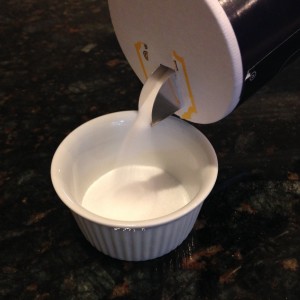10 Tips to Keep In Mind During National Salt Awareness Week
 Did you know that having too much salt in your diet can raise your blood pressure, which increases your chances of having heart disease or a stroke?
Did you know that having too much salt in your diet can raise your blood pressure, which increases your chances of having heart disease or a stroke?
Luckily, there is an entire week dedicated to spreading awareness about salt. This year National Salt Awareness Week started on March 4th and runs through March 10th! The World Action on Salt & Health startedNational Salt Awareness Week in 2008 to improve the world’s health by reducing sodium intake. Reducing your sodium intake can help improve your overall healthand reduce your risk for hypertension or other cardiovascular diseases.
The Dietary Guidelines recommend you consume less than 2,300 mg of sodium per day. However, theCenters for Disease Control and Prevention currently estimates sodium intake at 3,400 mg per day!! This means, that most of us are going over the daily sodium intake.In the American diet, the majority of sodium consumed is found in processed foods and restaurant meals. Let’s take a look at some tips to help you keep your sodium intake in check.
10 Tips to Keep in Mind
- When buying any processed foods, be sure toread nutrition labels and choose products with low sodium. Ideally, you want a product to haveless than 140 mg per serving. A product that is “very low sodium” should have 35 mg of sodium or less per serving. You may find it beneficialto compare various brands to see which one is the lowest in sodium!
- Try to have most of your meals home cooked!When you cook your own food, you oversee what goes into your food – you are aware of how much salt you are putting in.
- Use salt-free herbs and spices to add flavor and cut back on salt. Try cumin, red pepper flakes, garlic, pepper or any other spice, get daring!
- Don’t forget to check your condiments. Try to use low sodium ketchup/mustard and salad dressings. Remember, they are typically higher in sodium to keep them shelf stable.
- When going out to eat, always checkthe menu for low sodium options. You can even ask for dressings and sauces on the side, that way you’ll have more control of how much you are adding to your food.
- Choose frozen vegetables that say on the package “fresh frozen” and don’t have added seasoning or sauces. Fresh fruits and vegetables will always be low in sodium.
- Opt forfresh meats and poultry, as they’ll contain less sodium compared to the processed meats (hot dogs, sausage) that contain salt water or saline.
- If you like snacking on nuts or chips, be sure to choose unsalted or very lightly salted.
- When buying canned soups, keep an eye on the sodium content. Soups are typically higher in salt to keep fresh. Read the label and opt for the very low sodium soups! Or, make your own soup at home!
There’s lots of soup recipes in my upcoming cookbook Enjoying Food Peace, due out on March 20, 2019. Get a sneak peek and free recipe HERE.
- Most grains and baked goods will be higher in salt to keep them fresh. Don’t forget to read the label of your pastas and breads! Opt for choices that have the lowest amount of sodium per serving.
You may not realize how quickly sodium can add up throughout the day. It’s important to be mindful. The more mindful you are, the greater the chance of you decreasingyour risk for cardiovascular disease or stroke!
Your Turn to Take Action:What kind of changes will you make to ensure your food options are lower in sodium? Let me know in the comments below!

Leave a Reply
Want to join the discussion?Feel free to contribute!